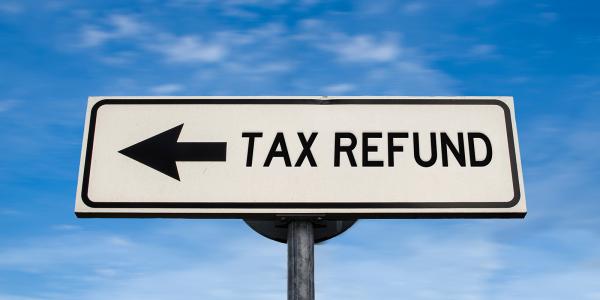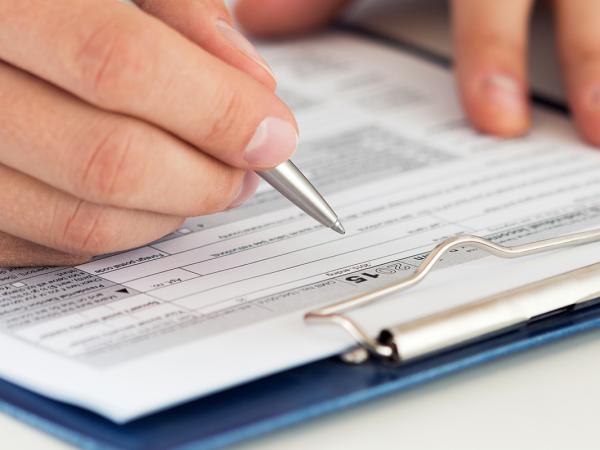Tax refunds on savings income
On this page, we explain how to claim a refund of tax paid on savings income. This information is for people who do not have to fill in a tax return. If you normally complete a tax return, see our page Self assessment tax refunds.

Content on this page:
Bank and building society interest
Since 6 April 2016, most people have no tax to pay on interest they receive from a bank or building society account due to the personal savings allowance (PSA) of £1,000 (or £500 for higher rate taxpayers).
As a result, since 6 April 2016, banks and building societies must pay you your interest gross. This means that they do not deduct any income tax from it before you get it.
This gives the right result for the majority of people, that is, there is no tax due or repayable on their savings income.
Note that you must add all your savings income together from all your accounts to work out if it is within your personal savings allowance.
Other types of interest and savings income
Certain other types of savings income and interest continue to have tax deducted at source. The deductions are usually made at the rate of 20%. For example:
- interest paid on lost/traced investment policies,
- the interest element of PPI compensation payouts,
- purchased life annuity income.
In these instances, you may be able to claim this tax back.
How to claim
Any tax taken off savings income will be at the rate of 20%. You may need to claim a repayment of tax, if any of your savings income should only have been subject to the starting rate of tax for savings (0% in 2024/25) or should not have been taxed at all, for example, because of the availability of the personal savings allowance.
To claim back overpaid tax on savings income you need to fill in a form R40(or form R43if you are living overseas). The R40 form comes withguidance notes to help you.
There is an example form and guidance on our page Form R40: repayment of tax on savings and investments.
You can complete the R40 form online or download and print the forms from GOV.UK.
If you want to complete the form by hand but are unable to print the form off yourself (or with help from friends, a local library, etc.) then you will have to contact HMRC to request that they send you a copy.
If you have any trouble in getting a form R40 sent to you by HMRC, please let us know - although HMRC are having a big push towards 'digital', they have assured us that a paper form should still be available, if requested.
If you fill in a paper copy, when it is complete, send it to the address shown on GOV.UK.
Information to include
Put your National Insurance number on the R40 form and in any accompanying letter.
You need to tell HMRC the amount of net interest that you received, the amount of tax that was withheld on it and also the gross amount (in boxes 3.1, 3.2 and 3.3 of the form R40 respectively).
You also need to tell HMRC about other taxable income that you received in the tax year – including the state pension.
You do not usually need to send interest certificates or any other supporting evidence with your claim, but HMRC might ask to see them before they process the form. If so, you will probably be asked for the originals. Take copies for your own records before sending them to HMRC.
The financial institution paying you may not give you an interest certificate automatically, but you can ask them to send you one. They have to send you a certificate free of charge if you ask for one and they have not sent one out before.
If you have lost an interest certificate and ask for a duplicate, they may charge you, so it is usually best to find out first how much a duplicate interest certificate will cost.
If your repayment claim is related to payment protection insurance (PPI), then HMRC have confirmed that they do require documentary evidence before they will issue a repayment. You can read more about this on our page PPI tax refunds. Again, it is recommended that you take copies of any original paperwork you provide to HMRC.
Information you need to keep
We suggest that you keep the following documents:
- a copy of the completed form
- proof of postage from the Post Office recording the date you sent it to HMRC, in case of later query
- the paperwork to support the claim for repayment, for example, interest certificates (or copies of these).
Timing of claims
You need not wait until the end of the tax year to make a claim.
If you make a claim during the tax year, you may have to make a provisional claim first and then a final claim after the end of the tax year, if you cannot provide the exact figures during the tax year.
Timescale for repayment
HMRC say it normally takes six weeks to get a refund. HMRC sometimes want to check some things before sending your repayment, as part of their aims to prevent people claiming tax back fraudulently, so it could take longer.
Between April and September following the end of the tax year there may be delays as this is the most popular time for sending in the forms.
You may also have to wait longer if HMRC decide they need to see supporting information, such as interest certificates.
You might receive your repayment more quickly if you make your claim online, as there should be fewer postal and processing delays.
If you are worried that your repayment is taking a long time to appear, you should telephone HMRC and have your National Insurance number to hand.
More information
The time limits for claiming tax refunds are set out on our page Tax refunds.
There is more information about savings income and tax generally on our page Tax on savings and investments.
You can find more information on form R40 and how to tell whether you are eligible for a repayment of tax on GOV.UK.
There is a guide on how to complete form R40, including an annotated version on our page Form R40: repayment of tax on savings and investments.
There is more information about using form R40 to claim a refund of tax on PPI interest on our page PPI tax refunds.



